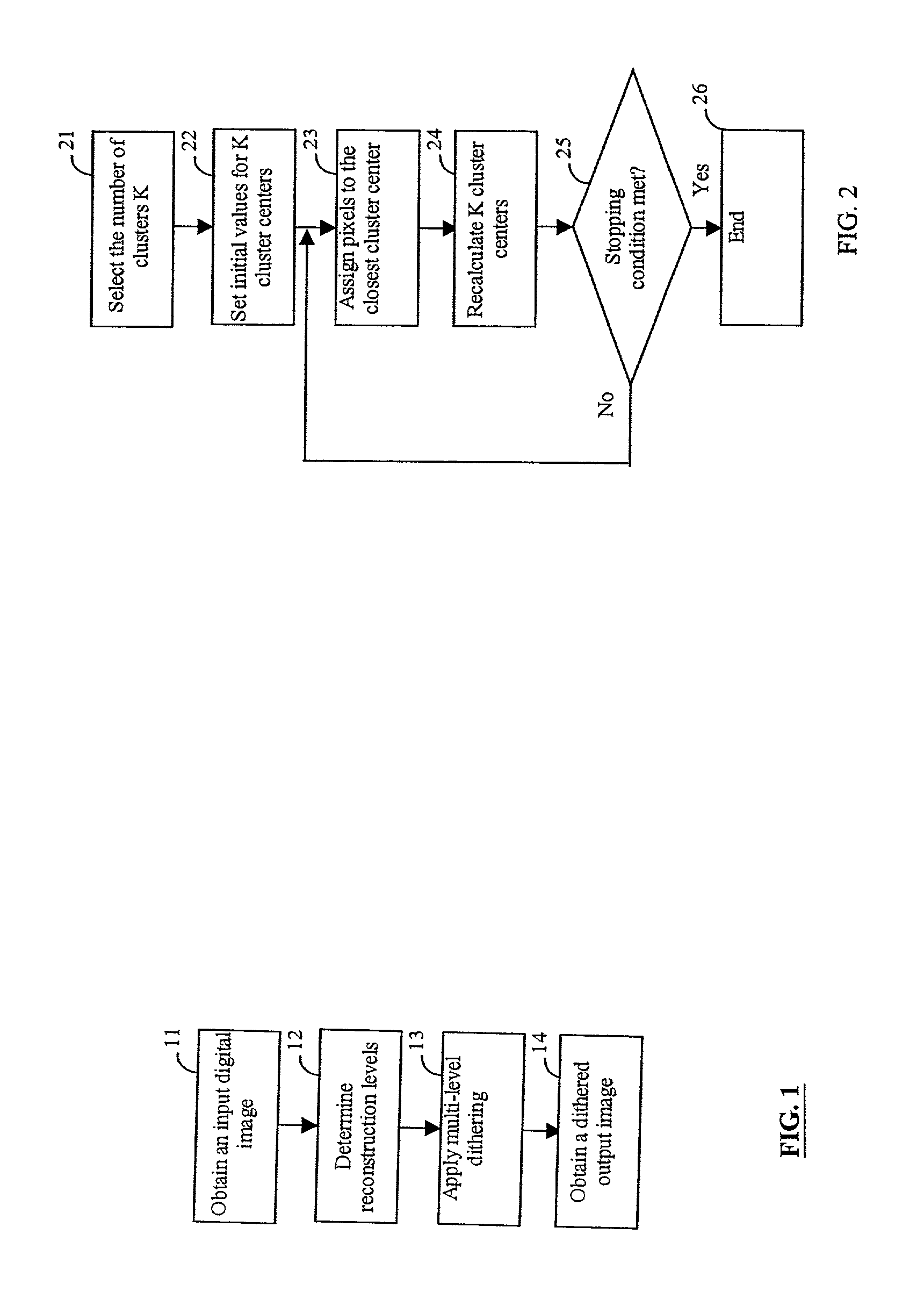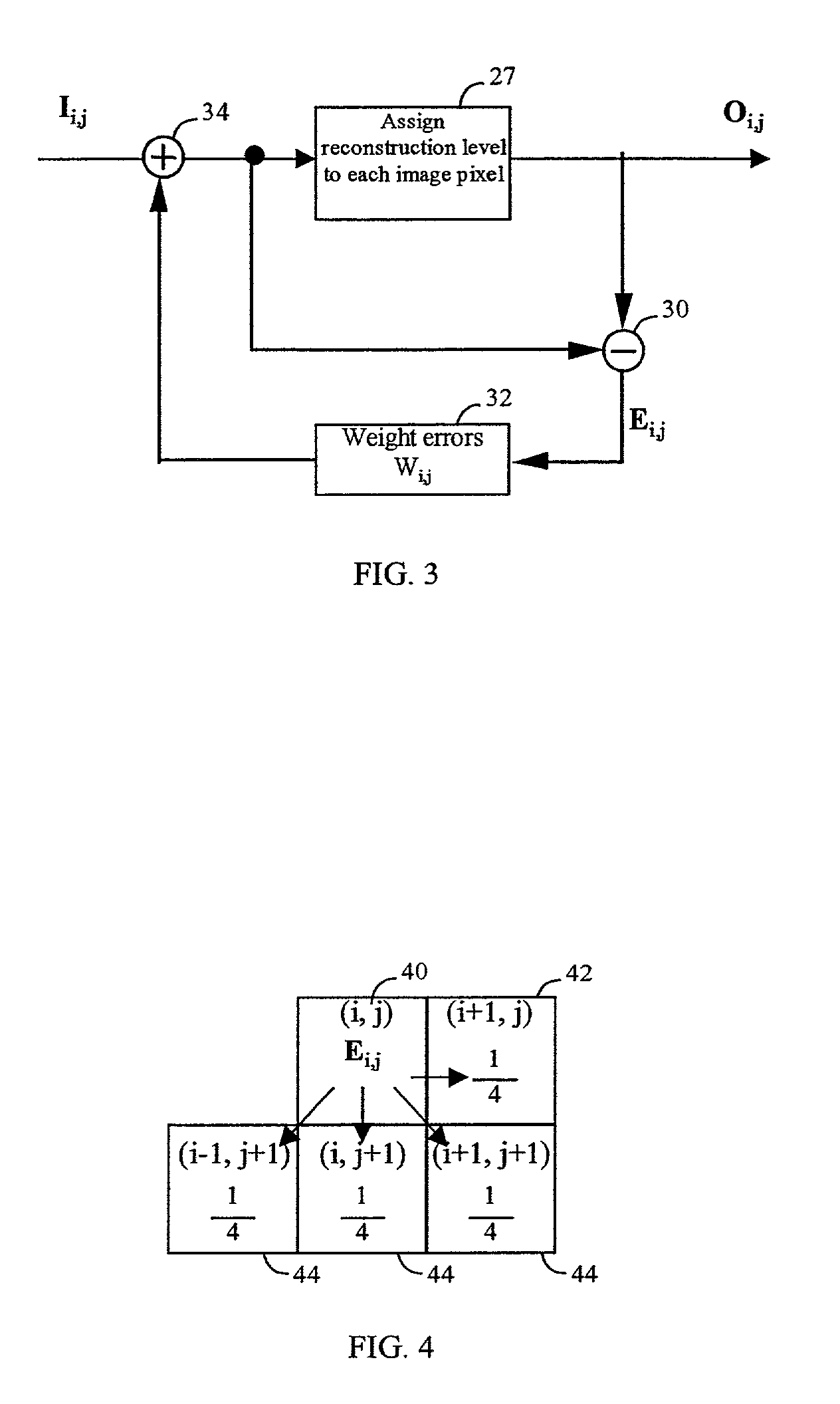Digital image multitoning method
- Summary
- Abstract
- Description
- Claims
- Application Information
AI Technical Summary
Benefits of technology
Problems solved by technology
Method used
Image
Examples
Embodiment Construction
[0017]Referring to FIG. 1, there is shown a block diagram of the present invention for a monochrome input digital image. An N level input digital image is obtained 11 and used to determine a set of M image-dependent, optimal reconstruction levels 12, where M<N, based on the gray level distribution of the N level image. In a preferred embodiment of the present invention, these reconstruction levels are chosen to minimize a mean squared error (MSE) between the N level input digital image and an M level output digital image where each pixel is quantized to the nearest reconstruction level.
[0018]A K-means clustering technique is used in the preferred embodiment to partition the values present in the N level input image into K clusters, where K is equal to M, giving rise to M cluster means.
[0019]Referring to FIG. 2, there is shown the steps of the K-means clustering technique. First, the number of clusters K is selected to be equal to M 21. Then initial values for the K cluster centers a...
PUM
 Login to View More
Login to View More Abstract
Description
Claims
Application Information
 Login to View More
Login to View More - R&D Engineer
- R&D Manager
- IP Professional
- Industry Leading Data Capabilities
- Powerful AI technology
- Patent DNA Extraction
Browse by: Latest US Patents, China's latest patents, Technical Efficacy Thesaurus, Application Domain, Technology Topic, Popular Technical Reports.
© 2024 PatSnap. All rights reserved.Legal|Privacy policy|Modern Slavery Act Transparency Statement|Sitemap|About US| Contact US: help@patsnap.com










